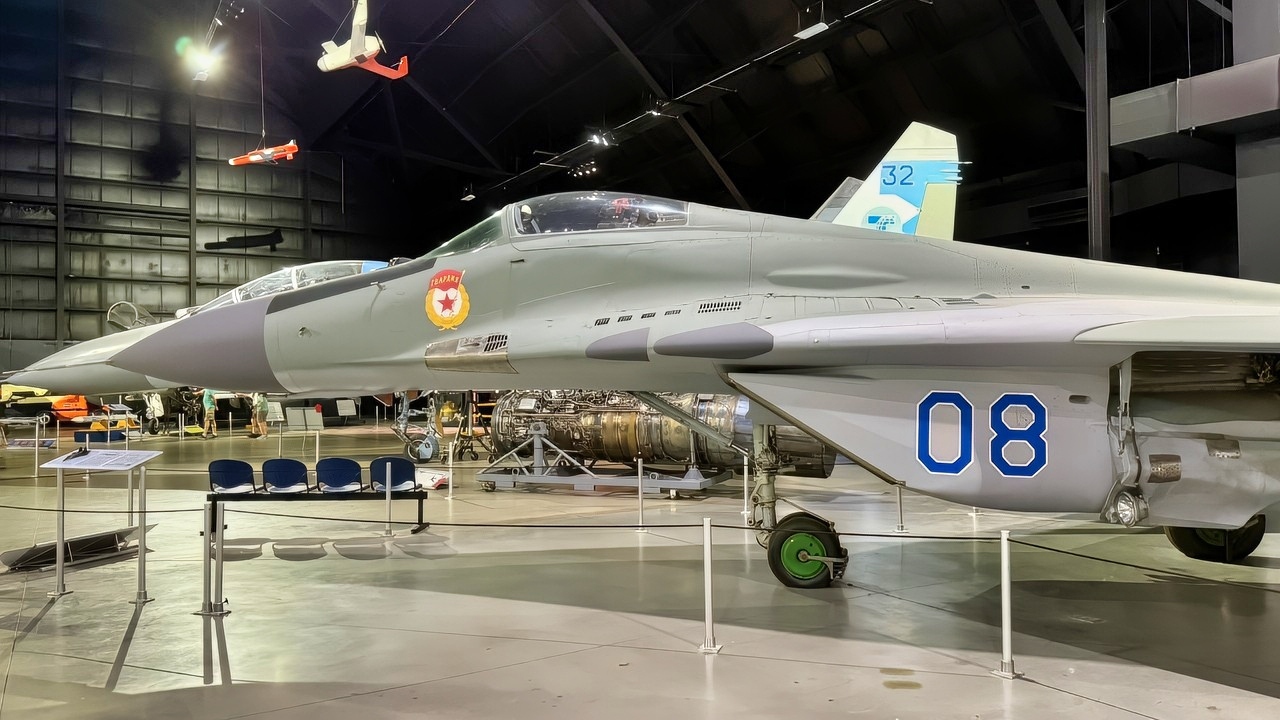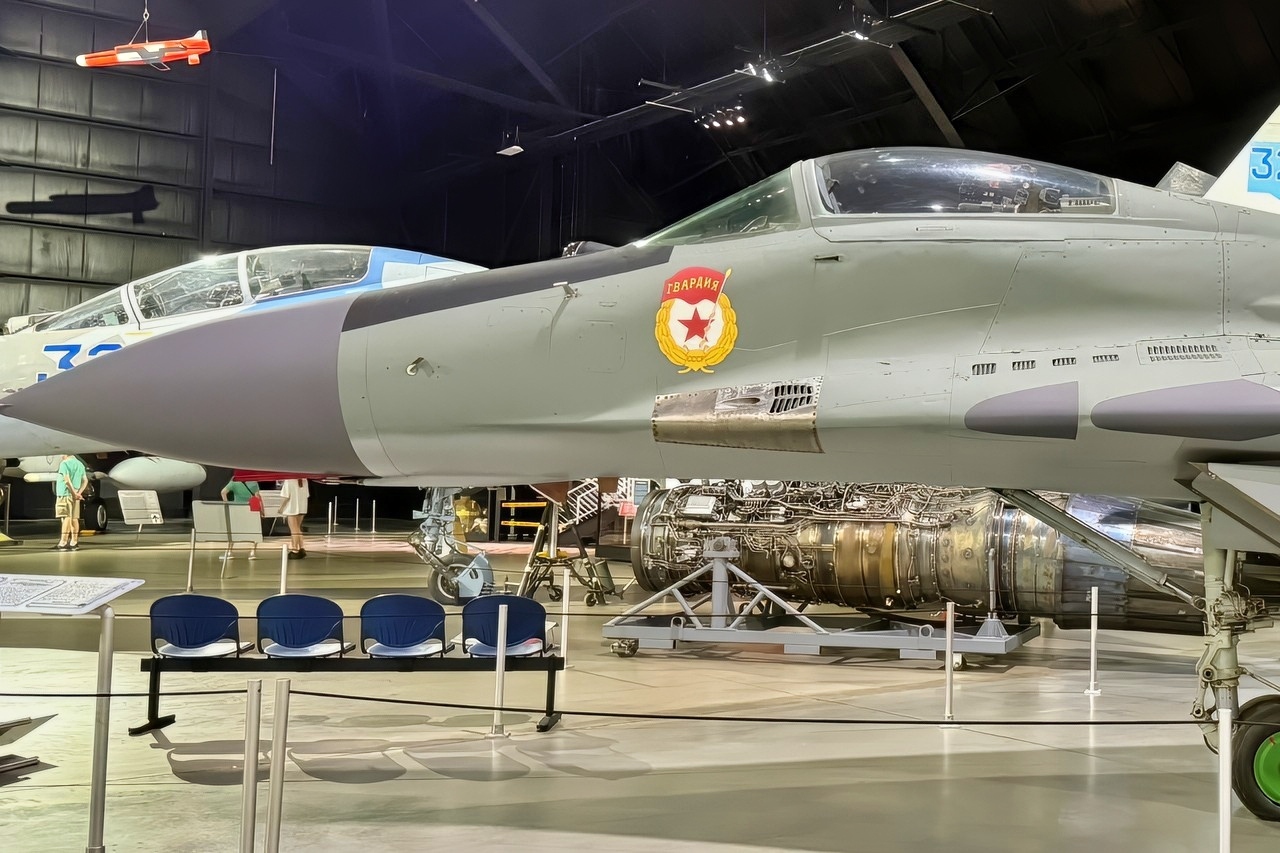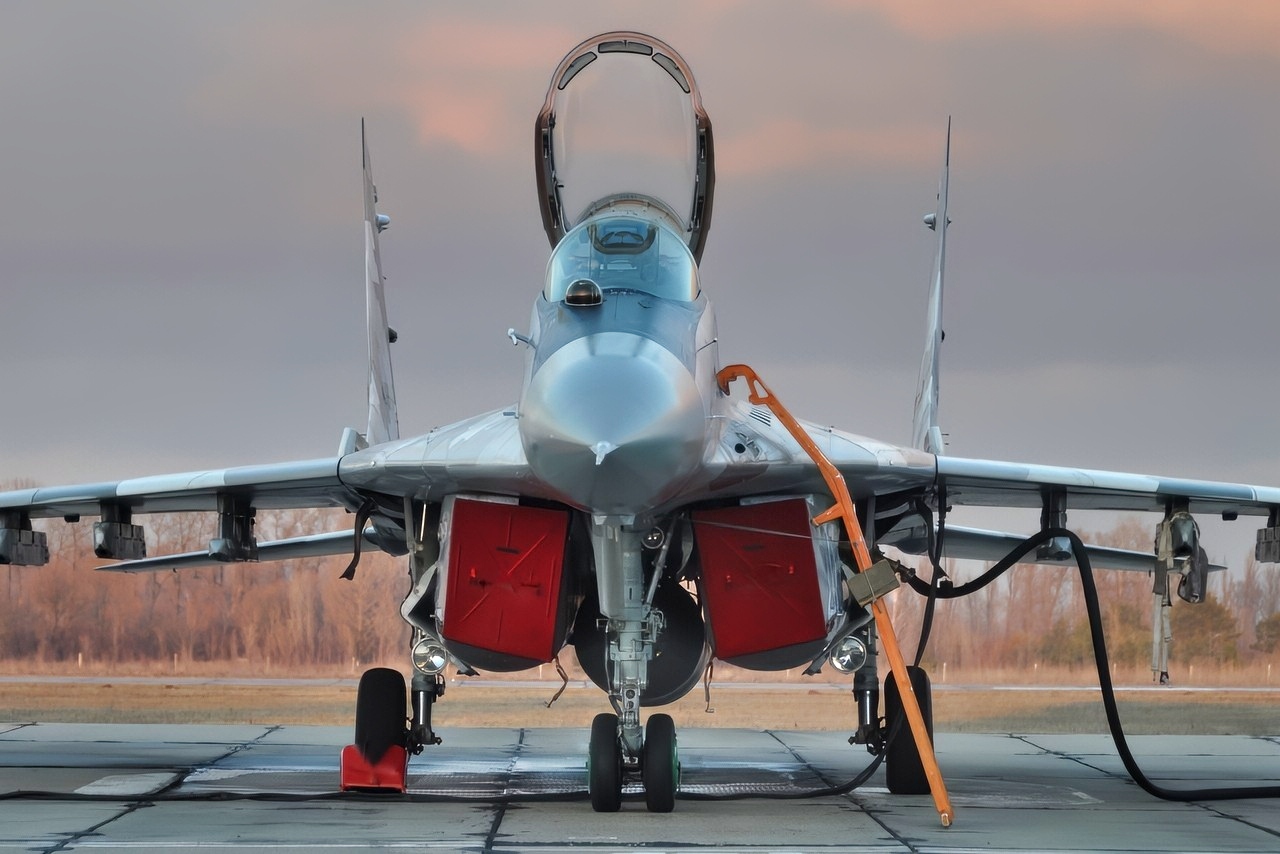The Time the U.S. Air Force Bought a Squadron of Russian MiG-29s
Key Points and Summary – Following the Soviet Union’s collapse, the U.S. feared that Moldova’s fleet of nuclear-capable MiG-29C fighter jets would be sold to Iran.
-To prevent this, the Clinton administration used the Nunn-Lugar Cooperative Threat Reduction Program to purchase 21 MiG-29s from the financially struggling nation in 1997.
-For approximately $40 million and humanitarian aid, the U.S. acquired the jets and transported them to Wright-Patterson Air Force Base.
-There, U.S. and Israeli pilots studied the aircraft, gaining invaluable intelligence on Soviet technology and developing countermeasures, successfully keeping the advanced fighters out of hostile hands.
America’s Very Own MiG-29 Fighters
In the aftermath of the Cold War, many stockpiles of old Soviet arms and equipment were vanishing as now broken former Soviet states sold them off for a bit of cash. Many of these arms consequently ended up in the hands of hostile states or terrorist organizations.
In one such case, the United States feared that a batch of Moldovan fighter jets would end up in the hands of Iran. This is the story of how the U.S. acquired 21 Soviet-made fighter jets.
The MiG-29 in a Post Soviet World
The MiG-29, known by its NATO designation “Fulcrum,” was one of the Soviet Union’s premier fourth-generation fighter jets. Designed in the 1970s and introduced in the early 1980s, it was built to rival American aircraft like the F-15 and F-16.
With a top speed exceeding Mach 2, advanced maneuverability, and a weapons suite that included radar-guided and infrared missiles, the MiG-29 was a formidable opponent in aerial combat. It also marked a shift in Soviet design philosophy, emphasizing pilot autonomy and agility rather than relying solely on ground-based control systems.
Following the collapse of the Soviet Union in 1991, Moldova inherited a fleet of 34 MiG-29s along with other military equipment.
However, the newly independent nation lacked the financial resources and technical infrastructure to maintain or operate these jets effectively. Facing economic hardship, Moldova began exploring options to sell the aircraft. Iran, which was actively seeking to modernize its air force and enhance its nuclear delivery capabilities, expressed interest in acquiring the MiG-29C variant. This particular model was reportedly wired for nuclear weapon delivery, making it especially attractive to Tehran.
Keeping Fighter Jets Away from Iran
The Clinton administration viewed Iran’s potential acquisition of these jets as a serious threat to regional and global security.
Iran already possessed Scud missiles and Su-24 bombers capable of delivering nuclear payloads, but the addition of MiG-29Cs would have significantly bolstered its air combat capabilities. The U.S. feared that if Iran obtained these aircraft, it could shift the balance of power in the Middle East and complicate efforts to contain Iran’s nuclear ambitions.
To prevent this scenario, the United States turned to the Nunn-Lugar Cooperative Threat Reduction (CTR) Program. Originally designed to help former Soviet states dismantle weapons of mass destruction and prevent their proliferation, the CTR program was expanded to include conventional weapons systems that could pose strategic threats.
Moldova was certified as eligible for CTR assistance in March 1997, and by October of that year, the U.S. finalized a deal to purchase 21 MiG-29s (14 MiG-29Cs, six MiG-29As, and one MiG-29B).
The package also included 500 air-to-air missiles, spare parts, and diagnostic equipment.
The U.S. Buys Russian Made Fighters
In exchange, Moldova received a cash payment reportedly around $40 million, along with humanitarian aid and non-lethal military equipment such as trucks.
This deal not only helped Moldova financially but also aligned it more closely with Western defense and diplomatic interests. It was a win-win situation: Moldova rid itself of expensive and potentially destabilizing military assets, while the U.S. prevented a hostile state from acquiring advanced fighter jets.
Once acquired, the MiG-29s were transported in pieces aboard C-17 cargo planes to Wright-Patterson Air Force Base in Ohio, home to the National Air and Space Intelligence Center (NASIC).
There, U.S. and Israeli pilots studied and flew the aircraft to understand its strengths, weaknesses, and operational characteristics. This hands-on experience was invaluable for developing tactics to counter MiG-29s in potential combat scenarios. Israeli pilots, who also received MiG-29s for evaluation, praised the aircraft’s agility and performance in close-range dogfights. One Israeli Air Force general even described the MiG-29 as “absolutely terrific” in maneuvering engagements, noting that it did not fall short of Western fighters in many respects.
Looking Inside One of the Soviet Union’s Best Fighters
Studying the MiG-29s allowed U.S. engineers and pilots to analyze Soviet avionics and radar systems, evaluate missile guidance and targeting capabilities, and understand maintenance and logistical requirements.

Real MiG-29 at USAF Museum in Dayton. Image Credit: National Security Journal.
These insights were particularly useful given the widespread use of MiG-29s by adversarial and non-aligned nations, including North Korea, Iran, Syria, and others. The intelligence gathered from these aircraft helped shape U.S. training programs, countermeasure development, and strategic planning.
However, the MiG-29 did not always perform well in real-world combat. For example, Syrian MiG-29s were outmatched by Israeli aircraft in the late 1980s, highlighting the gap between theoretical capabilities and battlefield effectiveness. These shortcomings reinforced the importance of hands-on evaluation by U.S. forces, allowing them to better understand the limitations and vulnerabilities of potential adversaries’ equipment.
Most of the MiG-29s acquired by the U.S. were eventually scrapped, though a few remain on display at various Air Force bases. In fact, the two photos in the text of this article are from a recent National Security Journal visit to the U.S. Air Force Museum, where you can see a real MiG-29.

MiG-29 National Security Journal Photo Taken in July, 2025.
There were rumors that some might have been transferred to Ukraine as part of military aid packages, but these claims remain unconfirmed. Regardless of their final disposition, the acquisition of these jets helped the U.S. gain a better understanding of Soviet airspace and more importantly, remained out of Iranian hands.
About the Author: Isaac Seitz
Isaac Seitz, a Defense Columnist, graduated from Patrick Henry College’s Strategic Intelligence and National Security program. He has also studied Russian at Middlebury Language Schools and has worked as an intelligence Analyst in the private sector.
More Military
The Virginia-Class Block III Submarine Is Almost Unstoppable
China’s J-20S Stealth Fighter Breaks Cover
The British Army’s Challenger 3 Tank Mistake Still Stings
The Bradley Fighting Vehicle has a Message for the U.S. Army
F-111 Aardvark ‘Fighter-Bomber’ Has a Message For the U.S. Air Force










